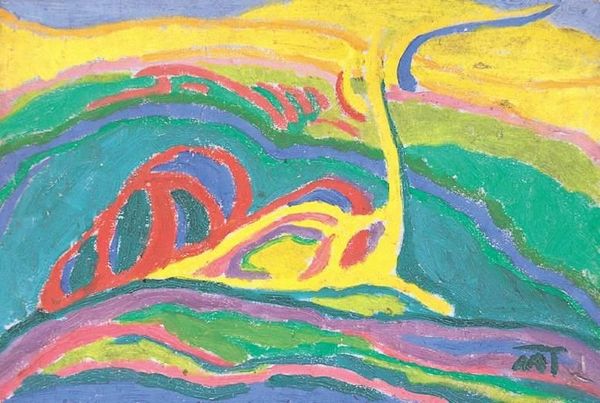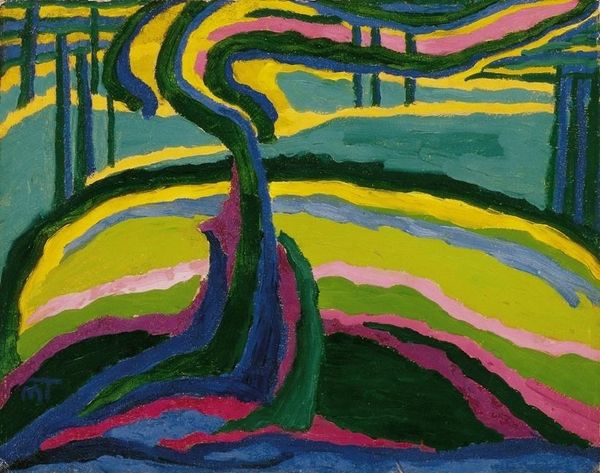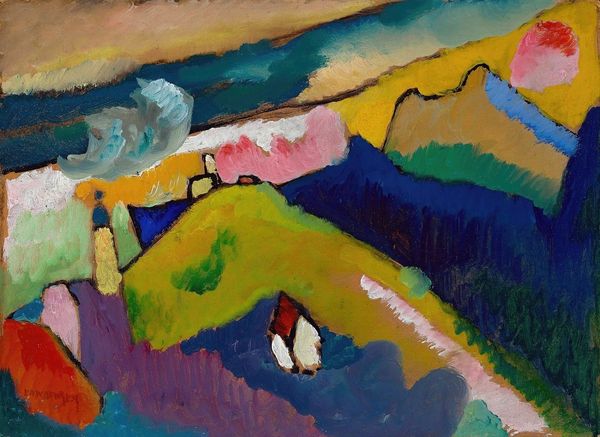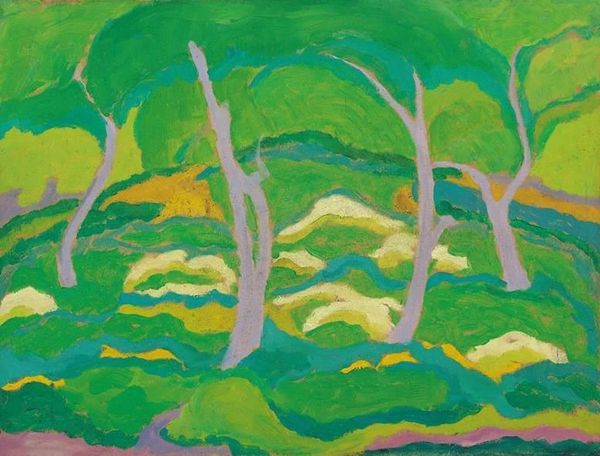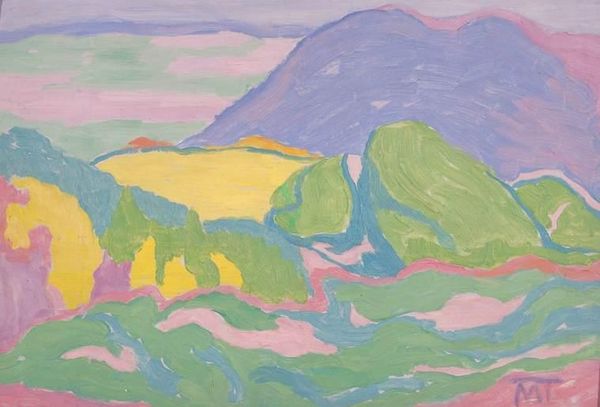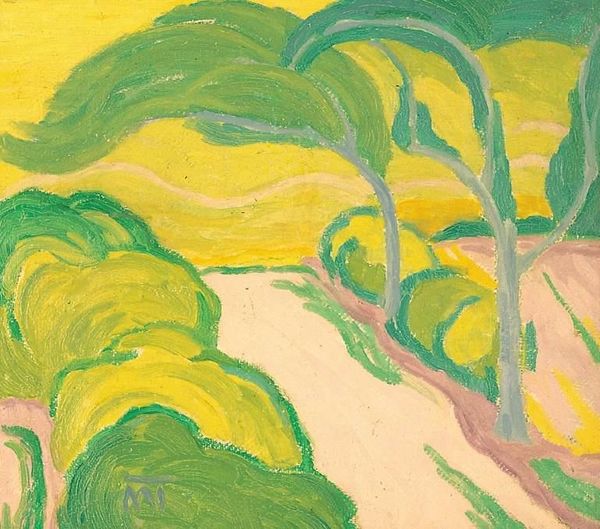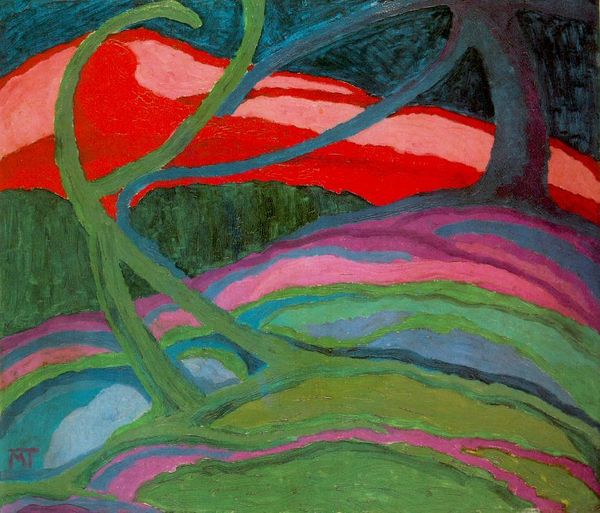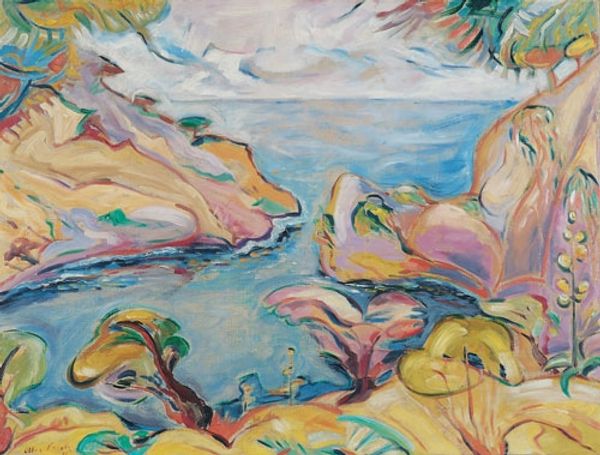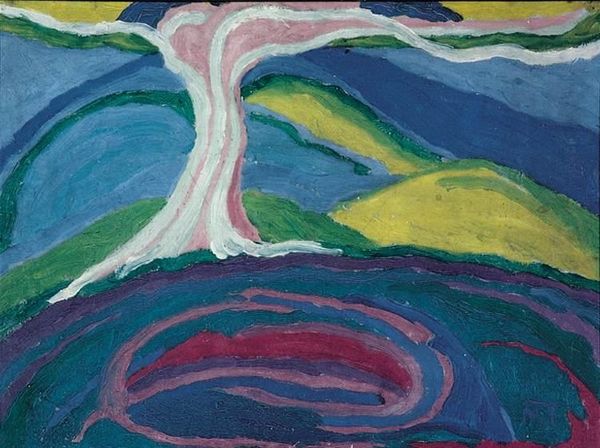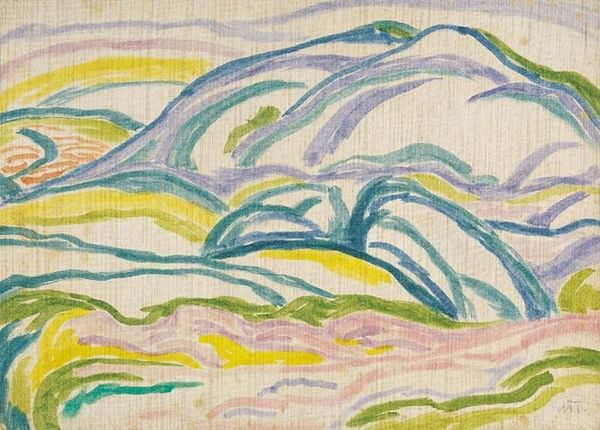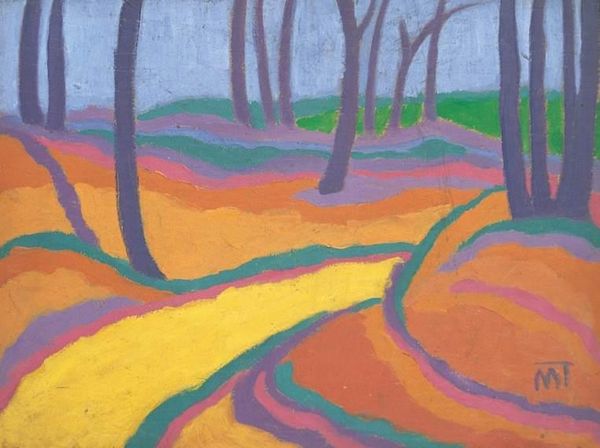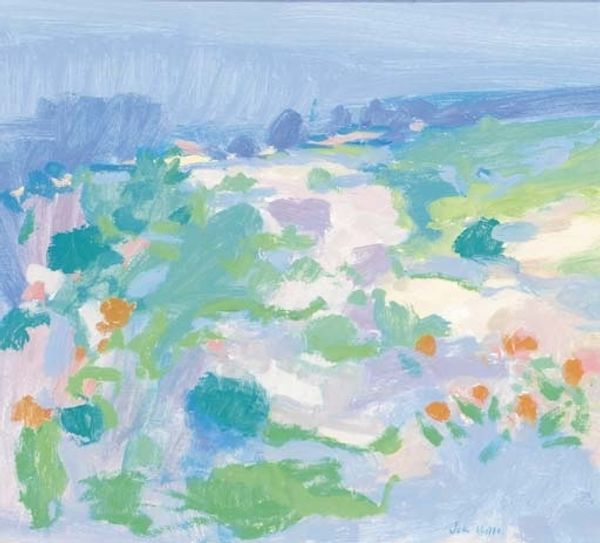
painting, oil-paint
#
abstract expressionism
#
organic
#
abstract painting
#
painting
#
oil-paint
#
landscape
#
organic pattern
#
expressionism
#
abstraction
Copyright: Public domain US
Curator: Standing before us is Janos Mattis-Teutsch's "A Landscape of Brasov," completed around 1915. He employed oil paint to depict this scene, leaning heavily into expressionistic techniques. Editor: Wow, it’s dreamlike. Those pink hills against the blues and greens create this oddly soothing, yet surreal landscape. I’m immediately drawn in by the unexpected color palette. Curator: Mattis-Teutsch was deeply involved in early 20th-century avant-garde movements. He sought a visual language to represent inner emotional landscapes rather than objective reality. This landscape showcases an organic abstraction with organic shapes that became the hallmark of his style during this period. He moves away from naturalism for greater self-expression. Editor: It definitely succeeds in evoking a feeling. The painting almost feels like a utopia—or maybe a distorted one, viewed through rose-tinted glasses, perhaps commenting on idealizations of landscape in times of great social and political upheaval? The war and social change of the era seeps through that bright exterior. Curator: That's a fascinating interpretation. His break from traditional landscape painting could reflect the broader artistic rejection of academic norms during the rise of modernism. We see him grappling with the relationship between subjective experience and objective representation, mirroring contemporaneous philosophical debates. Editor: Absolutely. The vibrant, almost unnatural colors contribute to the sense of unease—a quiet rebellion against what was considered "appropriate" art at the time. And in retrospect, we read it through the anxiety and rapid industrialization and changing norms. I mean what is natural anymore when even landscape shifts? Curator: A sentiment shared by many artists of his time. The "organic pattern," as some scholars have labeled it, may allude to larger social bodies being intertwined like a natural element that shifts when threatened. Editor: Thank you. Looking at the piece in that framework allows the artwork to take on a completely new emotional level. Curator: Indeed, bringing in those wider perspectives highlights the complexity and continued relevance of Mattis-Teutsch’s work.
Comments
No comments
Be the first to comment and join the conversation on the ultimate creative platform.
